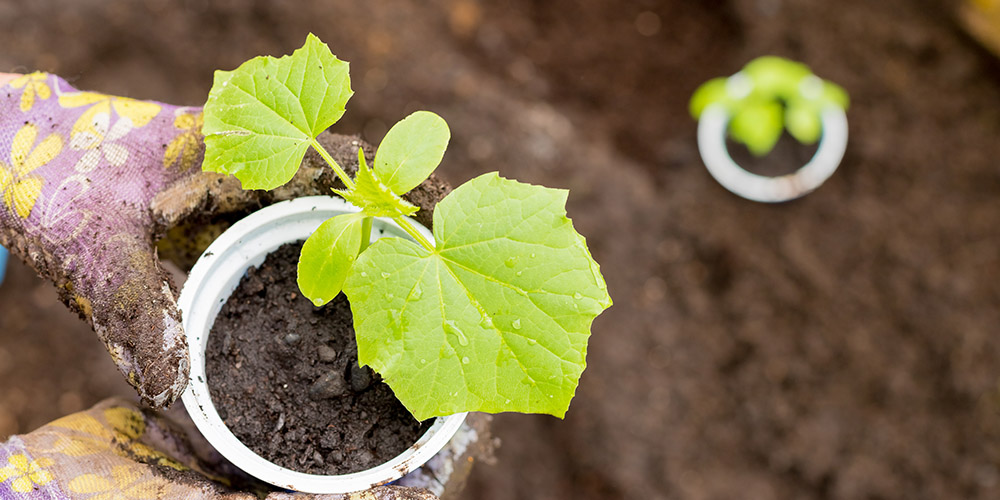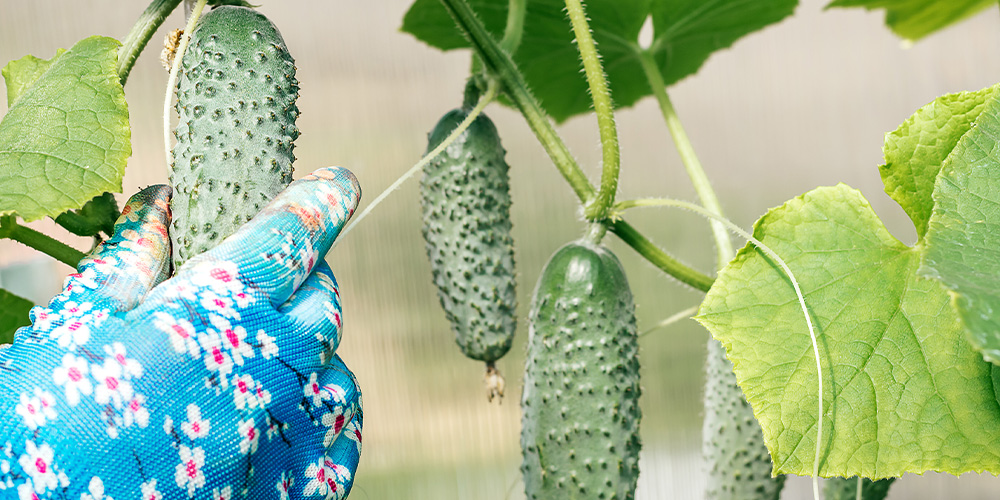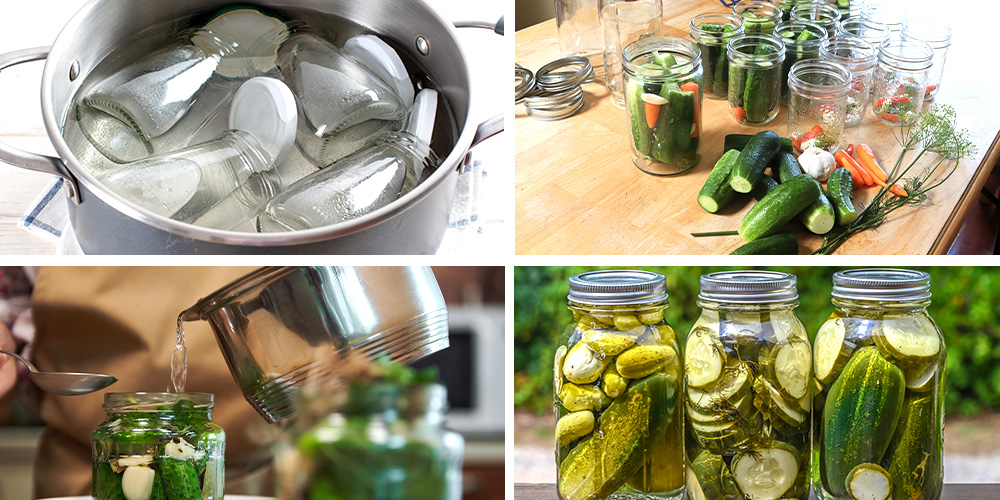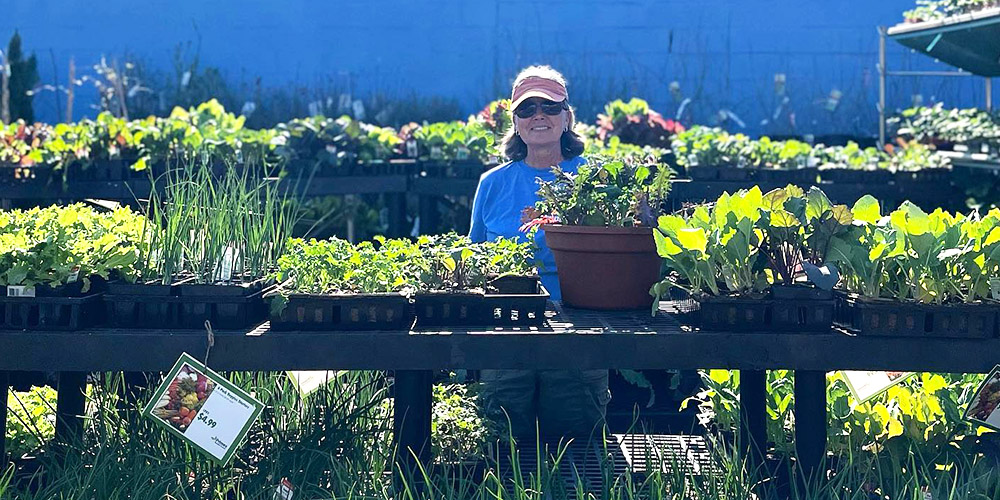What a Pickle: How to Make Your Own Pickles from Seed!
May 29, 2023
Whether you choose the fermentation or vinegar method, both offer a tasty process to preserve your cucumber harvest and relish this staple of American cuisine.
Most people are no strangers to the joys of eating pickles, but only a few have ever learned to make their own! Although a food that needs “souring” can seem daunting to the modern chef, it doesn’t have to be. Going from seed to cucumber to pickle is a plain and simple process—here’s how!
How to Choose Cucumbers for Pickling
If you want to make your own pickles, begin with a superior choice of seeds or seedlings. Technically, all cucumbers can be pickled, but with that said, some varieties produce pickles of much better quality. Good pickling cucumbers will be waxless and have bumpy skin; the label will tell you if they are a “pickling” variety.
How and When to Plant Cucumbers in Pennsylvania
Cucumbers are very frost-sensitive plants, so waiting until two weeks after your last frost date to transplant or sow them outside is essential. Choose a sunny, warm spot sheltered from the wind and give them proper spacing.
Vining cucumbers need a trellis, cage, or stake to climb, but bush varieties stand on their own without extra support. Since cucumbers like rich soil, mix in well-rotted manure or compost when planting.
Tips for Growing Cucumbers
- The key to cucumber care is consistent watering, approximately one inch per week, once they’re mature plants. Well-watered cucumbers lead to sweeter fruit.
- To keep the moisture in, it’s also a good practice to mulch around them with straw.
- Once vines reach the top of the trellis, pinch off the growing tip to encourage fruit-bearing side shoots.
How to Harvest Cucumbers for Pickles
The key to growing cucumbers for pickling is to harvest them when they’re small. We recommend harvesting pickling cucumbers when they’re 2 inches long and dill cucumbers when they’re 4-6 inches long. Younger cucumbers are sweeter, and it’s best to harvest them before they turn tough and bitter. Plus, frequent harvesting encourages more fruiting.
How to Make Your Own Pickles
Are Pickles Just Cucumbers Soaked in Vinegar?
In their truest form, cucumbers become pickles by undergoing a “pickling” process, also known as fermentation. Traditionally, this method involves putting the pickles in a salt brine, where you let the magic of good bacteria sour the cucumbers. What results are tasty pickles full of healthy enzymes and bacteria that are good for your digestive system. Sauerkraut and cheese are made in a similar way. Here are the guidelines for making pickles with this method.
Steps for Making Your Own Pickles
- Wash and sterilize your jars in boiling water.
- Wash your pickles and cut away any blemishes and bruises.
- Create a salt brine by mixing 1-3 tbsp of pure salt (no additives) with 1 quart of water.
- Place fresh dill and garlic cloves at the bottom of the jar. (Optional)
- Pack your pickles tightly into a clean jar, leaving 2 inches of space above them. Pack them tight enough so they won’t move once you add the brine, but not so tight that you bruise them.
- Pour the brine into the jar over the pickles, and make sure the brine submerges the pickles completely by about 1 inch or more.
- Place the lid on the jar hand tight and place them in a dark room or cover them with a towel for two weeks. Occasionally “burp” the pickle jars every two days to allow the release of gasses.
- They’ll be ready to eat and transfer into the fridge in two weeks. They should smell sour like pickles but remain firm and crunchy. If they turned mushy, the fermentation process did not work, and the pickles should not be eaten. A few white flakes floating on the water are normal, but any mold is a sign to discard the pickles and start again.
Pro Tip: Although pickled cucumbers get all the attention, you can pickle almost any vegetable with the same process described above, including carrots and beets.
Pickling with the Vinegar Method
Another way to make your own pickles is to create a brine using salt, water, and vinegar. In this method, the vinegar will sour the pickles in a quick transformation that can take as little as a few days. You can also boil and seal jars with a vinegar brine for long-term storage.
Making pickles involves two key parts: growing cucumbers and turning them into pickles. Whether you choose the fermentation or vinegar method, both offer a tasty process to preserve your cucumber harvest and relish this staple of American cuisine.
For any supplies you need to make your own pickles, including seeds or seedlings, come visit our garden center in Glenside, PA!



